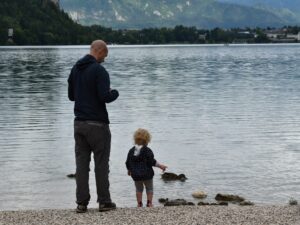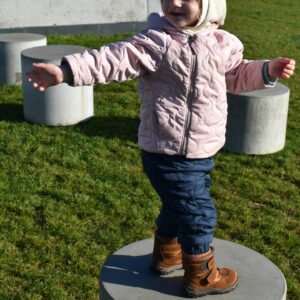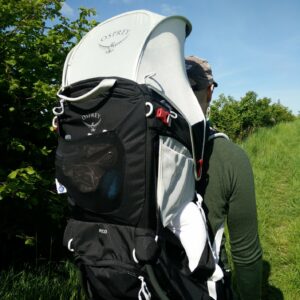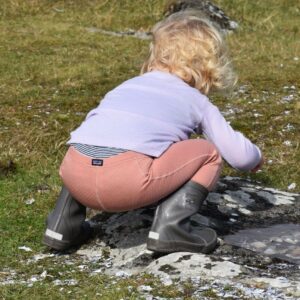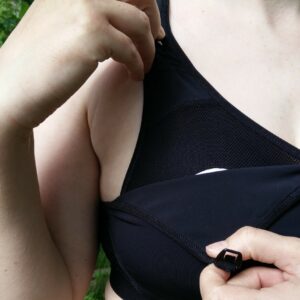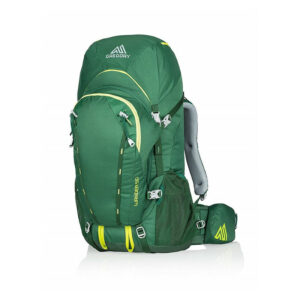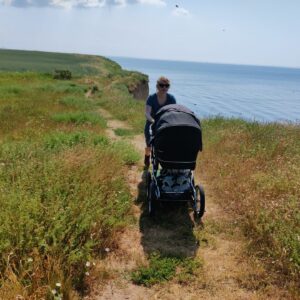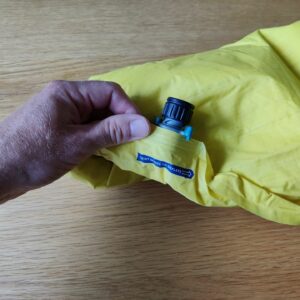It is nothing short of wonderful to take your kids, big or small, with you out in nature for a hiking trip. All children are different, but there are still some common traits and needs for the different age groups when venturing out in the blue. Previously I wrote the article Hiking with a Baby: Tips and Advice, where I focused on our experiences with hiking with our daughter MK from when we were able to carry her in the Osprey Poco child carrier (around 7 months) until she became a toddler and started walking, around the age of 13 months.
In this article I will focus on our experience with hiking with her as a toddler in the following two years. Some things are of course the same as when hiking with a baby, such as dressing the child appropriately, remembering sunscreen, bringing enough snacks and water as well as being prepared for a nappy change in the most unlikely places. Nevertheless, some things change as the child grows in length and strength and is able to (and demand to!) walk on its own. Cooperation is key as it is no fun to neither force the child into a child carrier backpack nor to carry around a furious toddler, screaming and kicking.
Hiking with a Toddler: Tips and Advice
- When is the child too big to be carried in a child carrier backpack?
- Extra entertainment might help to kick things off and save the day
- Be ready to ditch the plan or have a backup plan
- Plan and prepare for naps
- Try to plan a fun stop
When is the child too big to be carried in a child carrier backpack?
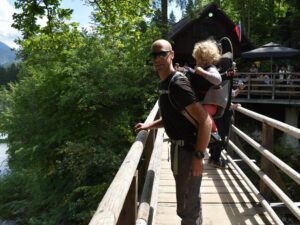
Hiking with a toddler – be sure to lower the cockpit of the child carrier backpack as the child grows
You can start carrying your child in a backpack once it can sit up straight on its own and has good head control (usually no earlier than six months), but it is a bit more ambiguous when you should stop. If you have looked at our selection of the best child carrier packs, you might have noticed that they all have a load limit of about 18 kilos (40 lbs.). If you child falls within the weight gain norm, that should technically mean that you can carry it in a child carrier as long as till its seventh birthday! Thus, it is more likely that it will be your child’s height/length which will determine the end date of carrying it in a child carrier backpack. As your child grows longer, you should lower its seat in the child carrier cockpit accordingly so that its chin is level with the top of the drool pad/backpack wall in front of it for comfort and security.
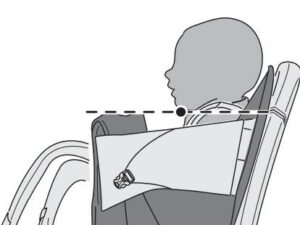
Hiking with a toddler – you should stop using the child carrier once the chin of the child is no longer in line with the edge of the carrier
If the child carrier backpack has stirrups, the straps should also be extended to accommodate the still longer legs of the child. At some point your child will simply have too long a torso for its chin to be in level with the drool pad in front of it, and that’s when it is time to retire the child carrier. At the age of 3 years, MK was currently 102 cm (3’4’’) tall and will presumably grow out of the Poco child carrier in a few centimeters. However, height can be distributed very differently between head length, upper and lower body length from person to person so you will have look at how your own child sits in your child carrier backpack to decide how long you can use it. For the Thule Sapling child carrier, the child height limit is defined to be 120 cm, but I think that might be at the more extreme end of suitable child height.
Once the child has outgrown the child carrier backpack, you need to choose hiking trails which the child can manage to walk on its own. Don’t be tempted into buying carrying devices like the American Piggybackrider or Norwegian Minimeis, as both of these are constructed so you carry all the weight on your shoulders rather than having it redistributed to your hips via a hip belt like a child carrier backpack.
Extra entertainment might help to kick things off and save the day

Hiking with a toddler – picking berries on the way can be entertaining, but you might need some digital entertainment to get started
Toddlers are strong, willful and persistent, and thus you need your toddler to be willing to put in and carried in the child carrier. More than once MK has outright refused to get into the Osprey Poco child carrier, and as she can contort her body in every shape possible to avoid being put into it, she actually has to agree to the action. Here, a bribe in the form of a smartphone playing a favorite song or cartoon can make even the most headstrong child cave in. Once you are on your way, natural distractions such as running or jumping with the child on your back, picking berries on the trail, or giving the child a stick, cone or stone to marvel at (or hit you with) can provide a more analogue form of entertainment.
Be ready to ditch the plan or have a backup plan
And sometimes, nothing will work. The child has set its mind on something else entirely than hiking and cannot be lured into the child carrier even if you carried a wide-screen TV on the top of your head for entertainment. Therefore, it is best not to set a plan in stone or perhaps have a backup plan in case of an uncooperative child, an unexpected weather change or other unpredictable events. It is always good to choose hiking routes, which you can shorten or lengthen according to the (toddler) conditions that day, while still getting an actual trip out of it. In terms of transportation, it is also good to be fairly flexible. We are all for using public transport when it makes sense, but it can be challenging to be stuck somewhere in nature where you don’t have a train or bus connection back to civilization for hours (or days!) if you have a toddler in tow.
Plan and prepare for naps
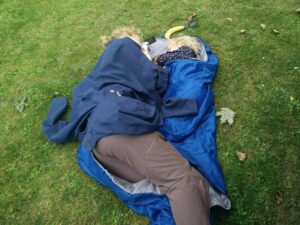
Hiking with a toddler – an interrupted nap in the child carrier might be continued on a sleeping bag
Chances are that your toddler still needs at least one nap a day to be a pleasant human being, so the timing of naps is something you need to take into consideration. If you know your child can’t fall asleep in the child carrier, you are of course forced to plan your hikes outside of the usual nap time. MK almost consistently fell asleep in the child carrier when she was a baby (even if it wasn’t nap time), but as she got older, she has more than once postponed her nap till the very (inconvenient) end of the hike. Besides curiosity, it is also less comfortable for her to fall asleep since her head now rests on the sides of the integrated sunshade rather than the sturdier sides of the cockpit. Still, we aim to plan hiking trips around her nap time in the middle of the day.
To mitigate a lack of neck support keeping her awake, we have often brought along a small baby pillow or folded some clothing up as a pillow for her inside the cockpit. This is not something we would recommend for a baby, but a toddler should not be in any danger with a pillow for the head although you should occasionally check that all airways are clear. Once asleep, we have also experienced her waking up shortly after gently putting the child carrier on the ground for a break. However, we have had very good luck with making her fall asleep again by making a sleeping bag ready and having her curl up next to me to get a full nap. This might not work with all kids, but it is worth giving a shot if your toddler also tends to wake up once the “ride” is over.
Try to plan a fun stop
As with every family outing, it is a good idea to have a fun stop included to keep the kids motivated and in good spirits. This can be a playground, an ice cream or cake at a mountain hut, a good spot for picking berries or a body of water where you can throw stones in. The best type of fun stop is, however, one where your child is motivated to move around on its own like a playground or a beach full of stones and sea shells. While the stirrups on a child carrier backpack help to keep circulation going, nothing beats your child getting some exercise once it is out of the cockpit. It can be also be practical with an “exhausting” fun stop if you plan to get your child to sleep in the child carrier later.


